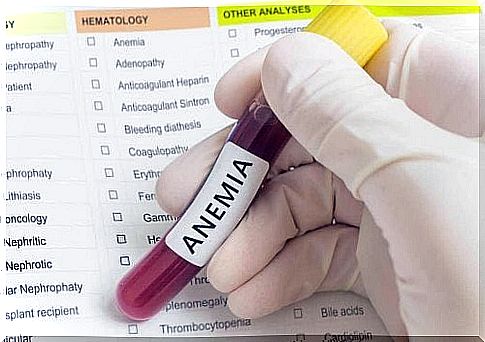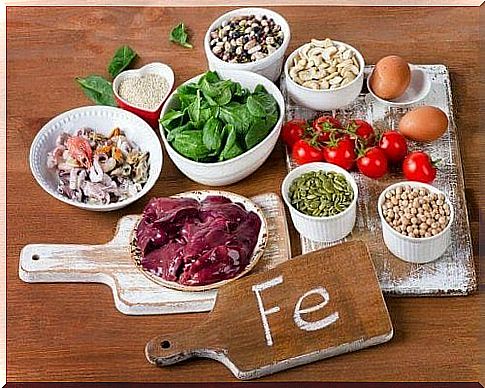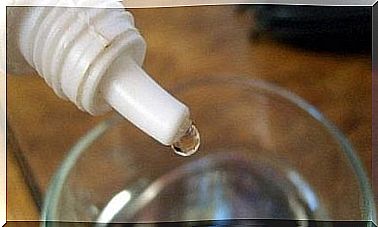Iron Deficiency Anemia In Children: What You Need To Know

Iron deficiency anemia is, of course, caused by insufficient amounts of iron in the baby’s body . Iron is an essential building block of hemoglobin, a protein that carries oxygen in the blood, for optimal tissue function.
This disease most often affects children from 6 months to 3 years of age, especially if their diet is not properly balanced and adapted to children’s needs. Of course, iron deficiency anemia can also affect older children, hence it is often consulted in pediatric offices. What are the causes of anemia and how does it manifest?
In order to answer these questions, it is necessary to pay attention to the most important aspects of this pathology. Therefore, first we will find out what are the main causes of its occurrence and then what are its symptoms and symptoms.
Iron deficiency anemia – why does it occur in children?
The main cause of iron deficiency anemia in children may be low iron absorption. Our body receives this mineral through food and processes it from old red blood cells.

First of all, it is worth knowing what increases the risk of disease. Some triggers of anemia include:
- Inadequate iron-poor diet.
- The inability of the body to absorb iron
- Slow and prolonged blood loss
- Excessive consumption of cow’s milk (especially when it replaces breast milk)
- Food allergies
- Lead poisoning (lead)
Symptoms of iron deficiency anemia in children
In the early stages, iron deficiency anemia usually does not cause any characteristic, disturbing symptoms. This, however, makes it difficult to treat it early, as iron levels and blood cell counts will continue to decline without our knowledge.
As anemia progresses in children, it causes the following symptoms and complications:
- Bluish or very pale color of the sclera of the eyes
- Brittle nails
- Reduced appetite or craving for unusual foods
- Weakness and chronic fatigue
- Headaches and dizziness
- Tooth irritability and caries
- Difficulty breathing and tachycardia
- Pale skin
- Weight loss and slight growth gain
Diagnosis of anemia in children
Initially, to diagnose iron deficiency anemia in children, a doctor will conduct a physical evaluation and interview the young patient. Then he takes a blood sample and sends it to a laboratory for analysis. This test checks if your red blood cells are lacking the iron they need.
To sum up: specialized tests that allow you to confirm the disease are:
- Hematocrit (HCT): detects anemia and other blood disorders.
- Serum Ferrin: Reveals the amount of iron stored in the body.
- Iron level: shows how much iron is in our blood.
- Total iron binding capacity of the serum (TIBC): used to measure the ability of a protein called transferrin to carry iron in the blood.
Iron deficiency anemia in children – prevention
However, in any case, the parents play the most important role, because they make all the decisions at this stage. Especially those concerning what is on a children’s plate.

So what should you do for your baby?
- First of all, provide him with an appropriate diet rich in all nutrients.
- On the other hand, babies should receive mother’s milk (if possible) until they are 6 months old. While some people ignore this fact, breast milk allows for better iron absorption and is a key element for the proper development of the immune system.
- Importantly, in the case of inability to take the mother’s milk, the selected equivalent must be enriched with iron.
- From 5 to 6 months of age our baby can be provided with more nutrients. Do it with fruits, vegetables and lean meat.
- Importantly, until the age of 1, avoid giving your baby cow’s milk.
- As your child grows older, a balanced and varied diet may be sufficient to obtain the correct iron values.
Visit to the pediatrician
Remember that any manifestation of iron deficiency anemia in children should be looked after by a pediatrician in the first place. Likewise, keep in mind that if your child is exposed to any risk factor or genetic condition, regular medical examinations, including blood tests, should be performed.
Iron deficiency anemia in children – treatment
Due to their age and developmental process, children only absorb a small amount of the iron they consume. Therefore, in order to obtain the necessary amount (about 8 or 10 mg per day), foods rich in this mineral should be included in your diet.

- Lean meat (chicken, turkey, pork)
- Fishes and seafood
- Eggs
- Legumes (dried beans, lentils, soybeans)
- Beef liver
- Oatmeal
- Peanut butter
- Dried fruits
- Plum juice
- Spinach
- Whole grain products
If a balanced diet alone does not help treat low iron levels and anemia, your doctor will likely suggest taking iron supplements by mouth. Under no circumstances should you give iron to children without the supervision of a pediatrician.
Tips you need to keep in mind
Most importantly, timely undetected iron deficiency anemia in children and lack of appropriate treatment: it can affect the child’s developmental process and their concentration. Low iron levels primarily reduce attention and alertness.
In conclusion, it is important to pay attention to each of the risk factors, to look at all the symptoms: to be able to deal with them directly and, above all, to avoid these problems in the future.









